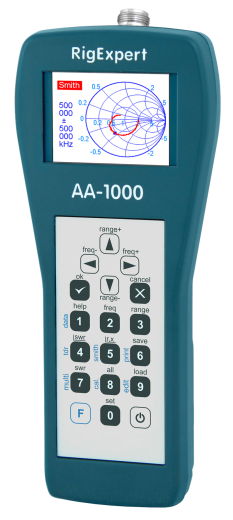The KN-Q7A single band SSB transceiver kit was designed specifically for the worldwide market by BA6BF, and kitted by BD6CR/4. As the upgraded version of the popular KN-Q7 (more than 500 kits were sold worldwide), the KN-Q7A has an improved circuit design and component selection, which makes it an ideal candidate for field operation, back pack and emergency use.

Improvements from KN-Q7
• Improved Low Pass Filter (LPF) circuit to meet the -43 dBc standard
• Added post IF amplifier one pole crystal filter to reduce background noise
• Removed RX/ TX indicator LED to further reduce RX current consumption by about 5 mA
• Added an on-board RF attenuator in the receiver front end to reduce broadcast interference
• Added power polarity protection
• Larger chassis area (+25%) used as heat sink to reduce thermal drift
• More frequency coverage options: support for European calling frequency 7.090 MHz and American calling frequency 7.285 MHz
• Matched IF filter crystals to ensure good selectivity
• Improved part selection, and reduction of SMD part count to just one transistor
• Improved Low Pass Filter (LPF) circuit to meet the -43 dBc standard
• Added post IF amplifier one pole crystal filter to reduce background noise
• Removed RX/ TX indicator LED to further reduce RX current consumption by about 5 mA
• Added an on-board RF attenuator in the receiver front end to reduce broadcast interference
• Added power polarity protection
• Larger chassis area (+25%) used as heat sink to reduce thermal drift
• More frequency coverage options: support for European calling frequency 7.090 MHz and American calling frequency 7.285 MHz
• Matched IF filter crystals to ensure good selectivity
• Improved part selection, and reduction of SMD part count to just one transistor
Specifications:
• Dimension: 153 mm x 97 mm x 40 mm, not including protruding features
• Weight: less than 500 g or 1.1 lbs
• Power Supply: 12~13.8 V, 3 A
• Current consumption: 30 mA in RX and about 2 A in TX @ 13.8 V
• RF output: about 10 W PEP @ 13.8 V • Spur suppression: better than -43 dBc
• Sensitivity: about 0.5 μV at 10 dB SNR • IF filter: 6 pole crystal ladder filter + 1 pole post IF amplifier crystal filter
• IF bandwidth: about 2.0 kHz
• IF frequency: 8.467 MHz or 8.192 MHz, depending on the selected tuning range
• Frequency tuning range: about 20 kHz in VXO type.
Five options: 7.050~7.070 MHz, 7.080~7.100 MHz, 7.145~7.165 MHz, 7.200~7.220 MHz, or 7.280~7.300 MHz
• Dimension: 153 mm x 97 mm x 40 mm, not including protruding features
• Weight: less than 500 g or 1.1 lbs
• Power Supply: 12~13.8 V, 3 A
• Current consumption: 30 mA in RX and about 2 A in TX @ 13.8 V
• RF output: about 10 W PEP @ 13.8 V • Spur suppression: better than -43 dBc
• Sensitivity: about 0.5 μV at 10 dB SNR • IF filter: 6 pole crystal ladder filter + 1 pole post IF amplifier crystal filter
• IF bandwidth: about 2.0 kHz
• IF frequency: 8.467 MHz or 8.192 MHz, depending on the selected tuning range
• Frequency tuning range: about 20 kHz in VXO type.
Five options: 7.050~7.070 MHz, 7.080~7.100 MHz, 7.145~7.165 MHz, 7.200~7.220 MHz, or 7.280~7.300 MHz
Connectors:
• Speaker output: 3.5 mm connector, mono output
• Microphone input: 8-pin, can be configured to be compatible with electret microphones.
• Antenna connector: SL-16 type (M or SO-239 type equivalent), rear panel mount.
• Speaker output: 3.5 mm connector, mono output
• Microphone input: 8-pin, can be configured to be compatible with electret microphones.
• Antenna connector: SL-16 type (M or SO-239 type equivalent), rear panel mount.
Controls:
• IF Gain Control: act as volume control
• Tune Control
• IF Gain Control: act as volume control
• Tune Control
Documentations:
• Quick Guide: English, Spanish and Japanese
• Full Manual: English, Spanish and Japanese
• Part List: English, Spanish and Japanese
• Drilling Template: No text, only drawing
• Quick Guide: English, Spanish and Japanese
• Full Manual: English, Spanish and Japanese
• Part List: English, Spanish and Japanese
• Drilling Template: No text, only drawing
Price List and Payment:
Kit: 115 USD, Assembled Kit 155 USD, Optional microphone 20 USD. Air shipping and handling 15 USD each for Asia and 25 USD each for worldwide. We accept paypal rongxh@gmail.com.
Should you have any questions or inquiries, email us to rongxh@gmail.com or join and send post to http://groups.yahoo.com/group/CHINA_QRP.
Mas info http://www.crkits.com/














